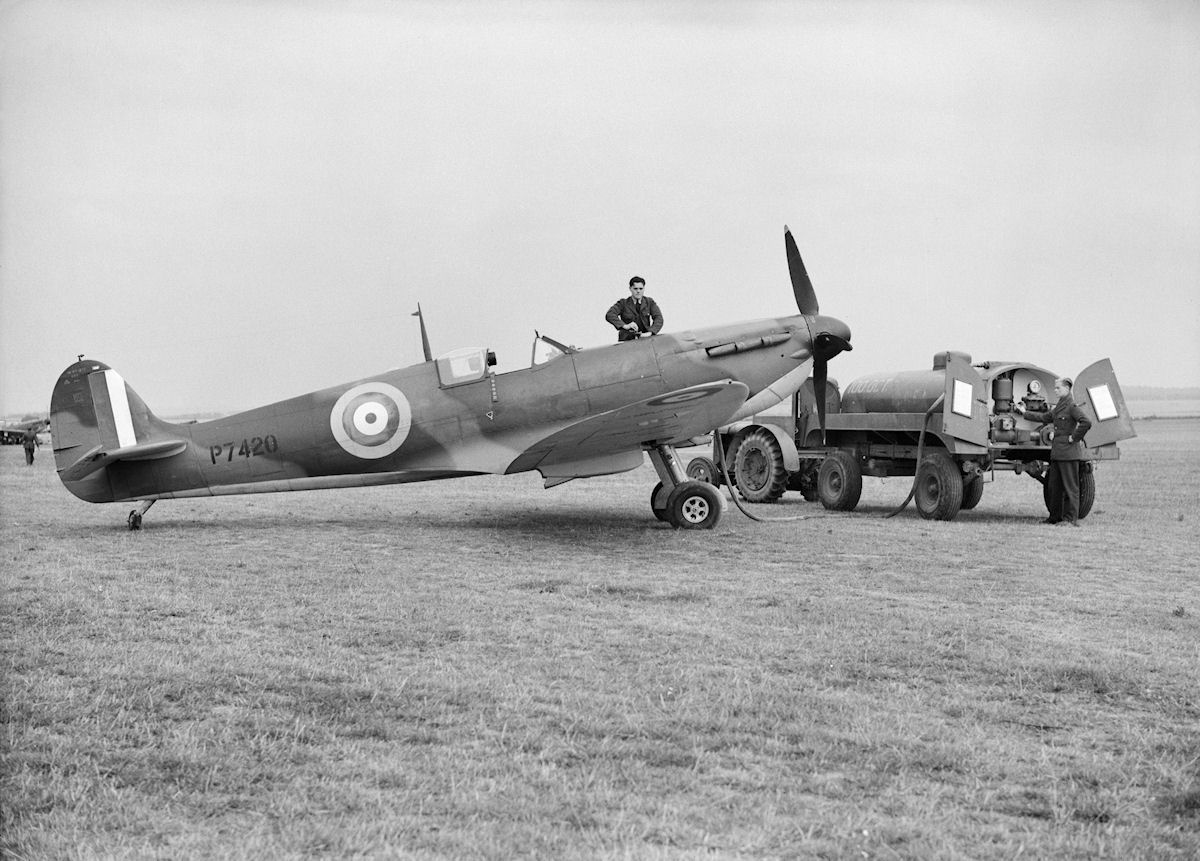
 |
|
|||||||
| FM/DM threads Everything about FM/DM in CoD |
 |
|
|
Thread Tools | Display Modes |
|
|
|
#1
|
|||
|
|||
|
Hi NZtyphoon:
One small correction if I may regarding the Westland Whirlwind:  |
|
#2
|
|||
|
|||
|
Just for fun whilst on the subject - from Flight, March 28, 1940
 From IWM: 19 Squadron, Fowlmere, Sept. 1940  |
|
#3
|
||||
|
||||
|
19 Squadron, Fowlmere, Sept. 1940
 Nuff said imho
__________________
Theres a reason for instrumenting a plane for test..
That being a pilots's 'perception' of what is going on can be very different from what is 'actually' going on. |
|
#4
|
|||
|
|||
|
details of plane in picture from http://www.spitfires.ukf.net/p004.htm
P7420 IIa CBAF MXII 6MU 16-9-40 19S 26-9-40 flew into tree nr Boxford Sussex Sgt Roden killed 15-11-40 SOC 23-11-40 FH44.40 |
|
#5
|
|||
|
|||
|
Quote:
The photo is of a 137 Sqn "Whirlybomber" from at least mid-to late 1942, so is it possible that the R-R Peregrine was rated to use 100 Octane by then? |
|
#6
|
|||
|
|||
|
Quote:
I have Warner's Blenheim book and in reviewing the bit about 100 octane in the outer wing tanks he wrote: "To take full advantage of 100 octane petrol the supercharger pressure could be increased from the normal 'Plus 5 lb/sq.in. boost' by the operation of an 'Emergency Boost Override' lever on the instrument panel. This overrode the Automatic Boost Control to allow 'Plus 9 lb' pressure, and was used for take-off and in emergencies only, for a maximum of 5 minutes." Interesting - and not unlike the Hurricane and Spitfire use of the boost cut-out enabling +12 lbs, although rather more complicated in practice apparently. |
|
#7
|
|||
|
|||
|
I did some research on this when i was active on my pet project, "getting off the ground in a Blenheim in CoD"
After reading through a copy of the pilot's operating handbook i found online, that's what i could gather: 1) Extra tanks were installed in the wings for more range. 2) This made the aircraft too heavy to safely take-off with bombs loaded. 3) Higher boost was needed. 4) Only the outer tanks got 100 octane fuel to assist in take-off, enabling use of +9 psi boost. This can be easily gleaned from reading the checklists. It was not as much of a WEP setting, as it was simply a "take off when overloaded" power setting. There were also other kinds of weirdness involved because only one pair of tanks had the ability to jettison fuel, the default inner tanks. This meant that the potential for WEP was completely wasted: crews were instructed to cruise to the target on the outer 100-octance tanks and drain them completely before switching to the inner ones, since the outer ones couldn't be drained by jettisoning fuel in an emergency. As such, the 100 octane fuel was effectively used during the probably safest part of the journey at cruise settings (or at least when some element of surprise still existed, during the inbound leg), not during the return from the target for escaping flak and fighters when it would mostly be needed. Historical loadouts for short range missions were what we use when we fly it in multiplayer on the CoD map: just 55%-60% of fuel (that is the threshold between inner and outer tanks), with the engines limited at +5 psi boost. |
|
#8
|
|||
|
|||
|
Quote:
The photo is part of a whole sequence of 137 Sqn photos taken at Manston in 1943; the last Whirlwind ops for 137 occurred on 21 June 1943, when 137 stood down to re-equip with Typhoons.The remaining Whirlwinds were transferred to 263 Sqn which had its last op in December before re-equipping with Typhoons. |
|
#9
|
|||
|
|||
|
Quote:
Thanks for the info on the book and the photograph. I’ll get the book. That sure is a nice photo! Following on the discussion about consumption and the use of 100 octane in the Blenheim, it shouldn’t be overlooked that the Defiant also used 100 octane and +12 boost. See the Combat Report of T. D. Welsh of 264 Squadron from 29 May 1940 where he recorded "I pulled the boost cut out…" for example. A.&A.E.E. reported on trials of the Defiant operating +12 boost.  And last but not least see Dowding’s memo from 1st August, 1940, with copies to all Stations and Squadrons, regarding Handling of Merlin in Hurricane, Spitfire and Defiant Aircraft wherein he mentions "The use of the automatic boost cut out control enables the pilot to get an emergency boost of + 12 lbs. per sq.in. from the engine for 5 minutes when circumstances demand it. Some pilots "pull the plug" with little excuse on every occasion." |
|
#10
|
|||
|
|||
|
From another forum:
Reserves Information The following information are the reserve stocks of 100 Octane fuel during the BOB period This information has come from the War Cabinet Oil Position Monthly report (a) that is available from the National Archives, as well as Gavin Baileys paper(b) and Wood and Dempster(c). Stocks of 100 Octane 30th September 1939 153,000 tons(b) 27th February 1940 220,000 tons(b) 31st May 1940 294,000 tons(a) 11th July 1940 343,000 tons(b) 31st August 1940 404,000 tons(a) 10th October 1940 424,000 tons(c) 30th November 1940 440,000 tons(a) Oh found this: from http://www.flightglobal.com/pdfarchi...0-%202155.html "It fell to the Shell Development Company in California to produce for the first time a commercially manufactured 100-octane gasoline in 1935. It was 50/50 straight-run material with synthetic blending agents, plus 4.8 c.c. tetra-ethyl-lead per Imperial gallon." Last edited by NZtyphoon; 02-23-2012 at 11:49 PM. |
 |
| Thread Tools | |
| Display Modes | |
|
|